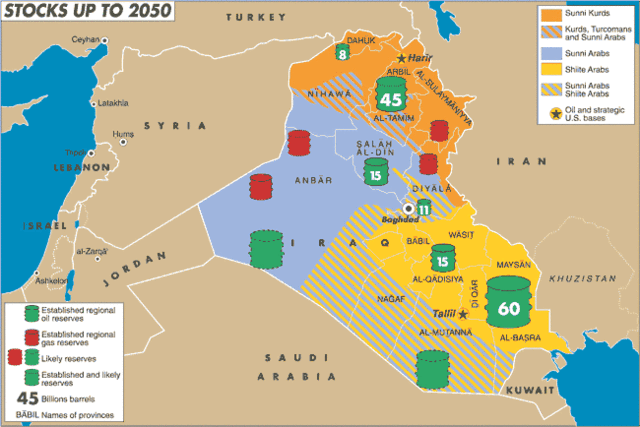The Middle East has been engulfed in a state of chaos for decades now, with the region becoming increasingly unstable in recent years largely due to western sponsored proxy wars. The current map of the Middle East was created in 1916 through the surreptitious Sykes-Picot agreement, a deal which divided the Ottoman-ruled territories of Syria, Iraq, Lebanon and Palestine, into areas controlled by either Britain or France. Today the chaos we see in the Middle East is the creation of Anglo-American-Israeli power, which is attempting to redraw the map to meet their present strategic and imperial objectives.
Islamic State: A Creation of US Intelligence
The Islamic State (IS) has hit the headlines in recent months due to their latest terror campaign in Iraq, which has led to US airstrikes in the North of the country. What has been omitted from mainstream circles though is the intimate relationship between US intelligence agencies and IS, as they have trained, armed and funded the group for years. Back in 2012, World Net Daily received leaks by Jordanian officials who reported that the US military was training ISIL (as it was then known) in Jordan, before being deployed into Syria to fight against Bashar al-Assad. Francis Boyle, a Law professor at the University of Illinois, has described IS as a “covert US intelligence operation” whose objective is to “destroy Iraq as a state”.
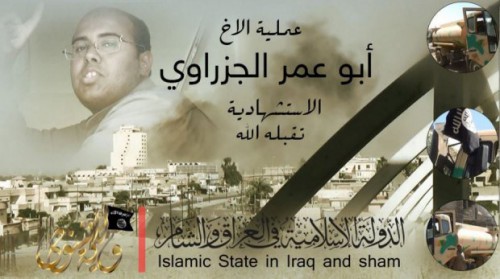
The strategy in the Middle East is the creation of a perpetual condition of instability and a policy of “constructive chaos”, where nation states are to be destroyed so that the map of the Middle East can be redrawn. IS provided the pretext to intervene in Iraq once again, with the intervention ensuring the oil fields in Erbil are safely in the hands of multi-national corporations – as oppose to chaotic and dysfunctional mercenaries. As well as providing the justification for the US, Britain and France to “bolster” the Kurds in the North of the country, which furthers the agenda of destroying “Iraq as a state”. As the President of the Council on Foreign Relations (CFR) and Former Director of Policy Planning at the State Department, Richard Hass, wrote in an Op Ed for Project Syndicate last month:
“It is time to recognize the inevitability of Iraq’s break-up (the country is now more a vehicle for Iran’s influence than a bulwark against it) and bolster an independent Kurdistan within Iraq’s former borders.”
As I reported in June, the policy in Iraq is to split the country into 3 separate religious and ethnic mini-states: a Sunni Iraq to the West, an Arab Shia State in the East and a Free Kurdistan in the North. The objective of dividing Iraq into 3 has been discussed in neo-imperial policy circles since as far back as 1982, when Israeli journalist – who also had close connections to the Foreign Ministry in Israel – Oded Yinon, wrote an article which was published in a journal of the World Zionist Organisation, titled: “A Strategy for Israel in the Nineteen Eighties”. Yinon discusses the plan for a Greater Israel and pinpoints Iraq in particular as the major obstacle in the Middle East which threatens Israel’s expansion:
“Iraq, rich in oil on the one hand and internally torn on the other, is guaranteed as a candidate for Israel’s targets. Its dissolution is even more important for us than that of Syria. Iraq is stronger than Syria. In the short run it is Iraqi power which constitutes the greatest threat to Israel (p.12)……….The dissolution of Syria and Iraq later on into ethnically or religiously unique areas such as in Lebanon, is Israel’s primary target on the Eastern front in the long run, while the dissolution of the military power of those states serves as the primary short term target.” (p.11.)
“In Iraq, a division into provinces along ethnic/religious lines as in Syria during Ottoman times is possible. So, three (or more) states will exist around the three major cities: Basra, Baghdad and Mosul, and Shi’ite areas in the south will separate from the Sunni and Kurdish north.”(p.12)
Israel is merely an extension of Anglo-American power and has been since its creation in 1948, so any expansion of Israeli territory is synonymous with an increase in Anglo-American hegemony in the region. Arthur James Balfour, the British Foreign Secretary from 1916 to 1919 and author of the 1917 Balfour Declaration – which declared British support for the creation of a Jewish state (Israel) in Palestine – was also a member of the Milner Group, according to CFR historian Carroll Quigley in his book the Anglo-American Establishment (p.311). The Milner Group was the precursor to the Royal Institute of International Affairs (RIIA) or Chatham House; the British arm of the CFR, with both organisations sharing the collective objective of creating an Anglo-American global empire.
The Plan for a “Middle Eastern Union”
After funding and being directly responsible for much of the chaos and instability that has been unleashed in the Middle East, western think tank strategists are proposing a centralised, sovereignty-usurping union as the solution to the problem they have created, in a classic deployment of the order out of chaos doctrine. As The New American reported last month, Ed Husain, an Adjunct Senior Fellow for Middle Eastern Studies at the CFR, compared today’s Middle East to Europe before the EU was created, and he asserted that the only solution to the ongoing violence is the creation of a “Middle Eastern Union”. This sentiment was echoed by Hass, who compared the Middle East of today to 17th century Europe, in his article “The New Thirty Years War”. Hass proclaims that the future will likely be as turbulent unless a “new local order” emerges:
“For now and for the foreseeable future – until a new local order emerges or exhaustion sets in – the Middle East will be less a problem to be solved than a condition to be managed.”
The idea of an EU-style governing body over the Middle East is not a new concept. In 2008, the Iraqi government called for anEU-style trading bloc in the Middle East that would encompass Saudi Arabia, Iran, Kuwait, Jordan, Syria, Iraq, Turkey and later perhaps the Gulf states, in an address to the US think tank the Institute of Peace. The President of Turkey, Abdullah Gül, was in attendance at the second meeting in 2011 along with Egemen Bağış, the ‘Minister for EU Affairs and Chief Negotiator’ at the time, who gave a speech where he described the EU as the model for the Middle East:
“We all know that the EU emerged as the most successful peace and development project of the history after a bloody war. Today, we have the very same expectations for the Middle East.’”
Whether a “Middle Eastern Union” will be created is difficult to determine at this point in history, but there is no question that the process of redrawing the map of the Middle East is well under way.
Steven MacMillan is an independent writer, researcher, geopolitical analyst and editor of The Analyst Report, especially for the online magazine “New Eastern Outlook”.



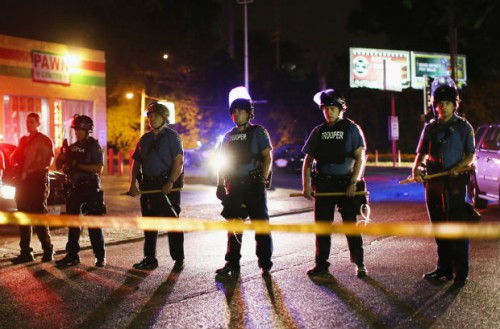
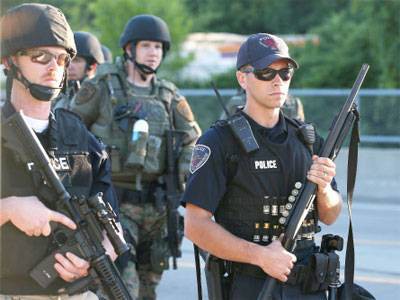 Moreover, violent crime in America — assault, murder, robbery, rape — emanates disproportionately from the black community, and especially the young male members of that community.
Moreover, violent crime in America — assault, murder, robbery, rape — emanates disproportionately from the black community, and especially the young male members of that community.
 del.icio.us
del.icio.us
 Digg
Digg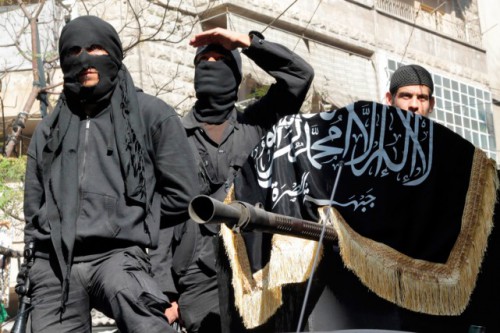

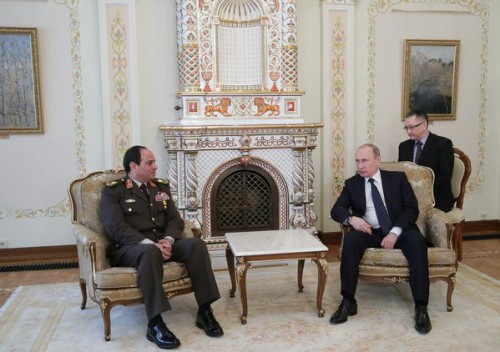

 Die Neuzeit ist jene Epoche, die auf das vermeintlich dunkle Mittelalter folgte. Sie dauert als »Moderne« an, und ihr Kennzeichen ist die Emanzipation des einzelnen hin zu dem, was zu einem Allerweltswort verkommen ist: hin zum Individualismus, dessen vornehmliches Tun die Infragestellung von Schicksal, Bindung, Erbe und vorgegebener Hierarchie, kurz von jeglicher Form ererbter und vorgesetzter Fremdbestimmung ist.
Die Neuzeit ist jene Epoche, die auf das vermeintlich dunkle Mittelalter folgte. Sie dauert als »Moderne« an, und ihr Kennzeichen ist die Emanzipation des einzelnen hin zu dem, was zu einem Allerweltswort verkommen ist: hin zum Individualismus, dessen vornehmliches Tun die Infragestellung von Schicksal, Bindung, Erbe und vorgegebener Hierarchie, kurz von jeglicher Form ererbter und vorgesetzter Fremdbestimmung ist.